We're an affiliate
We hope you love the products we recommend! Just so you know, we may collect a share of sales or other compensation from the links on this page. Thank you if you use our links, we really appreciate it!
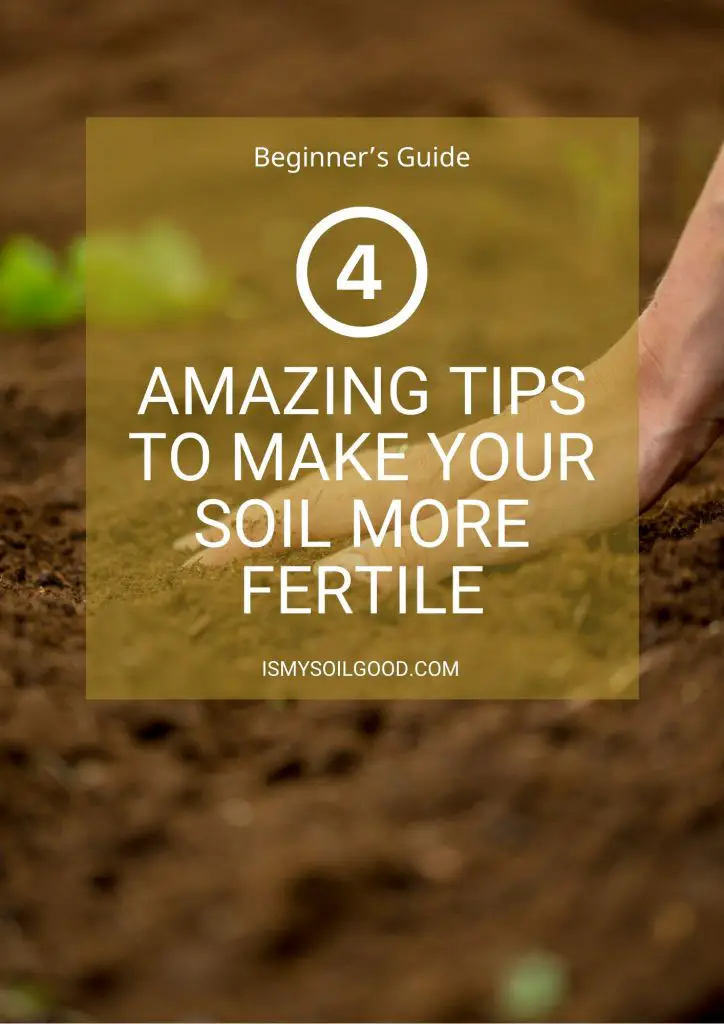
For any farmer or gardener, knowing how to make the soil more fertile is paramount. Soil fertility is a complex topic that all farmers should be keen to understand.
Generally, soil fertility can be termed as the ability of soil to foster crop growth and facilitate optimal yields. Therefore, this means that soil fertility is somehow subjective.
This is because some soils are ideal for growing one type of crop, while others are not since the nutrient requirements of different plants vary.
However, don’t let this scare you; there are general practices that apply to all soils.
Table of Contents
What is Soil Fertility?
Before we begin to discuss how to make soil more fertile, let us first talk about soil fertility and what it constitutes. Our soils are habitat to a diverse range of micro-organisms, plant roots, and animals, which all undergo an ecological life process that leaves our land more fertile.
Essentially, fertile soil should be able to bear healthy crops over a given period without demanding a lot of external inputs such as fertilizers. This is because, in healthy soil, the organisms previously mentioned turn organic matter into nutrients. They also help aerate the land, and lastly, protect your vegetables from certain pests and diseases.
Therefore, soil fertility is a component of overall soil productivity. It tells us about the soil’s nutrient status, and its ability to provide nutrients that crops need either from its reserves or through the addition of external help (manure or fertilizers).
As such, what you should understand is that the topic combines different soil properties from the biological and physical to the chemical ones, all of which affect nutrient dynamics and availability.
While natural factors determine soil fertility to a significant extent, you should know that soil fertility is manageable. This means that there are several measures that you can take to optimize crop nutrition to attain sustainable crop production.
First, know your soil
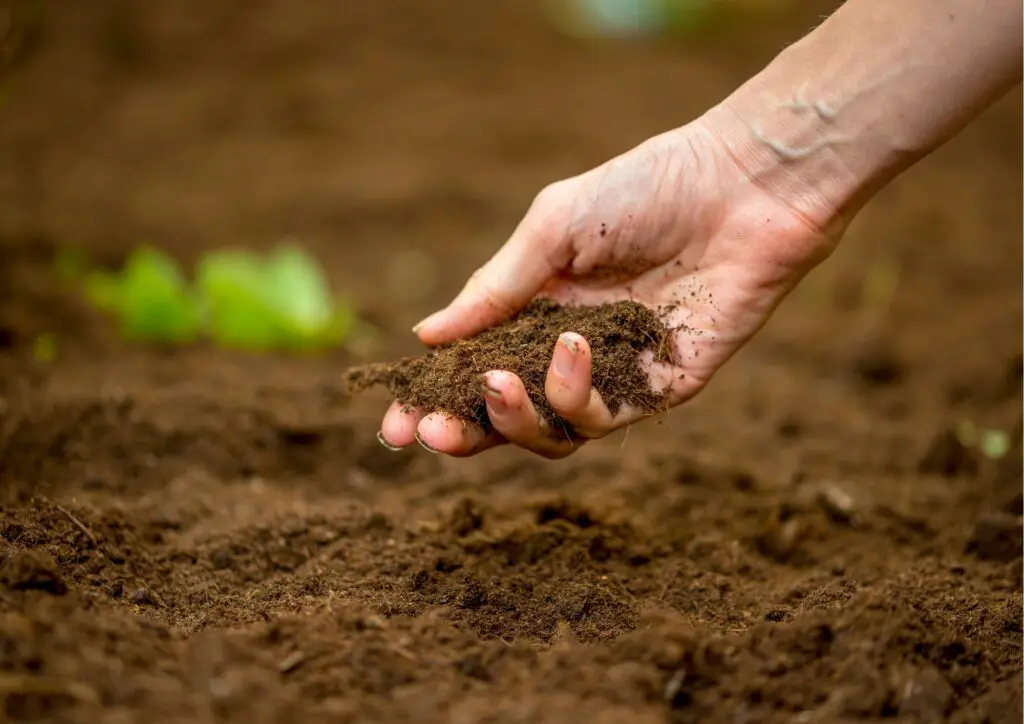
The first step on your way to a healthier garden is knowing your soil. By this, we mean that you must first and foremost test your soil for nutrients.
It helps you evaluate things such as soil pH, texture, drainage, and, more importantly, nutrient availability. All these factors directly determine how fertile your soil is.
The good thing is that with modern technology, you can quickly test your soil without having to go to the lab or pay a professional to come and do it.
Tips on how to make the soil more fertile
1. Add Organic Matter
Organic matter ranges from weed/crop residue, green manure, and tree pruning to kitchen waste. So the next time you throw out your orange peels or vegetables that have gone bad, consider scattering them on your farm. There are several ways in which organic matter impacts soil fertility.
- Organic matter provides nourishment for bacteria, fungi, and other beneficial organisms in the soil. These organisms release nutrients to the land and also help reduce the pest population in the soil.
- They prevent siltation/capping by forming a layer on top of the ground.
- When organic matter decays, it releases nutrients such as nitrogen into the soil.
- It helps prevent soil erosion by forming a layer on top of the soil.
- It is environmentally friendly.
Example of beneficial organic matter
Now let’s look at several organic matters and how they help your soil.
Green Manure
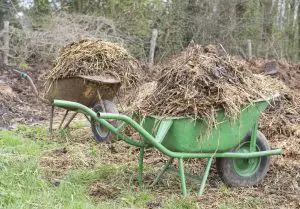
Green manure is one of the most common organic matter used in farming. Basically, green manure is created when you leave uprooted crop parts to decay in the field.
You can either plow the cut crops into the soil or even leave them on the ground to decompose over time. The most commonly used green manure crops include peas, winter wheat, alfalfa, clover, and annual ryegrass, among others.
Green manure helps improve soil quality, reduces the occurrence of crop-rotation diseases, and aids in binding nutrients. If you don’t have access to animal waste, this is the best option for you.
However, it would help if you remembered that no green manure could meet all your soil’s nutrition requirements. This is because the nutrients released are dependent on the type of crops you use.
For example, if you use nitrogen-rich plants to make your green manure, they will release more nitrogen. As such, you should use a blend or mixture of crops, for example, grass mixtures and legume plants.
Animal Waste
Another commonly used source or organic manure is animal waste. However, different animals provide different amounts of nutrients depending on their diet, species, and manure storage practices.
For instance, cow manure is comprised of approximately 10 – 15 pounds of nitrogen, 10 – 12 pounds of potassium, and 5 – 10 pounds of phosphorous per ton. Chicken manure, on the other hand, has more percentages of all the three highlighted nutrients.
The application of manure is essential. If you are using raw manure, ensure that you apply it at least three months before planting.
Compost
One of the best forms of organic manure is compost. While it might take you a little more time and work to make compost, we can assure you that it is worth the effort.
Compost is a mixture of organic residues such as manure and straw that have been piled, mixed, and moistened to undergo thermophilic decomposition. Compost helps to improve fertility, bulk density, and water-retention properties of soil.
Also, unlike raw manure, compost does not introduce weed seeds to your farm. This is because the high temperature and decomposition make any seed that might have passed through an animal’s digestive system not viable.
2. Introduce Earthworms
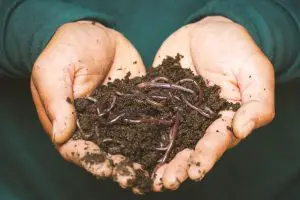
For nutrients to be introduced to your soil, decomposition has to occur. This is facilitated by soil micro and macro-organisms, which decompose organic matter and aid in the formation of humus, which is essential for any healthy, productive soil.
Also, this organism helps to recycle and improve the availability of nutrients so that your plants can easily access them. One such organism is the earthworm.
The next time you see this worm slowly crawling and digging into your soil, don’t harm it.
These small worms are essential since they feed on dead and decaying organic matter. After feeding, earthworms release nutrients rich dung. In addition, they help to aerate the soil.
If you would allow me to be a little bit technical, the growth of earthworms in organic wastes is referred to as vermiculture. On the other hand, the process of creating waste using earthworms is called vermicomposting.
If you want to introduce these worms to your farm, don’t worry; chances are already present on your farm. Just make sure you create an environment they can thrive. Your soil should be moist, and you also need to add organic matter.
However, if you want to be 100% sure, you can buy these worms online or in numerous stores. In most cases, they are sold by the pound.
3. Balance your pH
How acidic or alkaline your soil is plays a very significant role in determining your soil’s fertility. For most plants, the recommended pH levels range from 6.5 to 6.8. When the pH becomes higher or lower, the nutrients in the soil become chemically bound to soil particles.
This means that your crops will not be able to absorb the nutrients. Therefore, even when you add all the organic manure to your farm, your plants will not grow as efficiently as you might have hoped if the pH is not right.
PH is typically measured using a range that varies from 1 to 14. Any pH reading that is below 6.5 indicates that your soil is acidic. While a reading of above 6.8 shows that your soil is alkaline.
The steps you will take to balance this depends on what you want to do. If you’re going to reduce the pH of your alkaline soil, you can add ground sulfur. Apart from this, you can also use naturally acidic organic materials like sawdust and oak leaves.
If you find your soil is very acidic, you should ask yourself what lowers soil pH. For acidic soil, the commonly used method is liming. The process involves the addition of calcium and magnesium-rich materials such as limestone or hydrated lime to the soil to neutralize its acidity.
Apart from this, it also increases the activity of soil bacteria which, as earlier mentioned, impacts soil fertility. Some additional benefits of liming include;
- Prevents molybdenum deficiency.
- Makes the soil more hospitable to earthworms
- Prevents calcium and magnesium deficiencies.
- improves soil structure.
- Enhances water-solubility and availability of phosphates for your crops.
- Prevents accumulation of toxic levels of manganese and aluminum.
4. Do as little tillage as possible
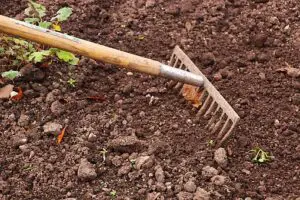
In technical terms, you can define tillage as the mechanical manipulation of soil in order to grow crops.
While many farmers do it, they do not realize that excessive tillage affects the soil’s water retention, temperature, and infiltration process.
Tillage is generally categorized into primary and secondary tillage. Primary tillage involves the use of equipment such as a disk plow, and it is more intensive. Secondary tillage is done before planting, and farmers use equipment such as harrows and packers.
The problem with tillage is that it fractures the soil affecting its structure and composition. This is because it encourages erosion either by wind or run-off water.
Since most of the nutrients our crops require are contained in the topsoil, when it gets eroded, our farms or gardens are left without the much-needed nutrients. There are plenty of things you can do to avoid the damage of tillage if you have a small garden such as;
- Add a mulch

A mulch is essentially any material such as grass clippings, which you spread over the surface of the soil. Mulching is vital because it encourages healthy soil tilth since it allows the soil to retain moisture and nutrients.
Additionally, it helps curb the spread of weeds and also aids in economic water usage.
The mulch will continually introduce organic matter to your garden and will keep it in a loose and open structure, eliminating the need for tilling.
- Create fixed pathways in your garden
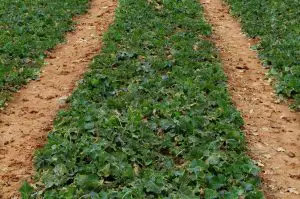
One of the main reasons why people till their land is because it becomes compact. A rule that you should always follow as a gardener is that you should not walk in your garden beds unless necessary.
This is because stepping on the garden soil usually compacts it, and you will end up using equipment that is over till the land. Also, compact soil does not create an ideal habitat for micro-organisms that are helpful to your soil.
Conclusion
Hope by now you understand that soil has to be taken care of for it to be productive. One thing that you should know about soil fertility is that it is manageable. This means that if you follow the tips that we have given you, your garden will be the talk of the town in the next farmers market.
Finally, ensure that you test your soil first and understand what it has and what it lacks before embarking on any soil care activity.

